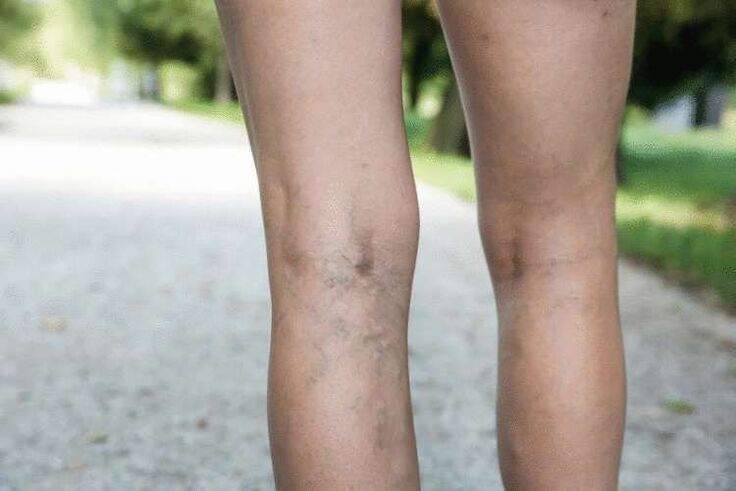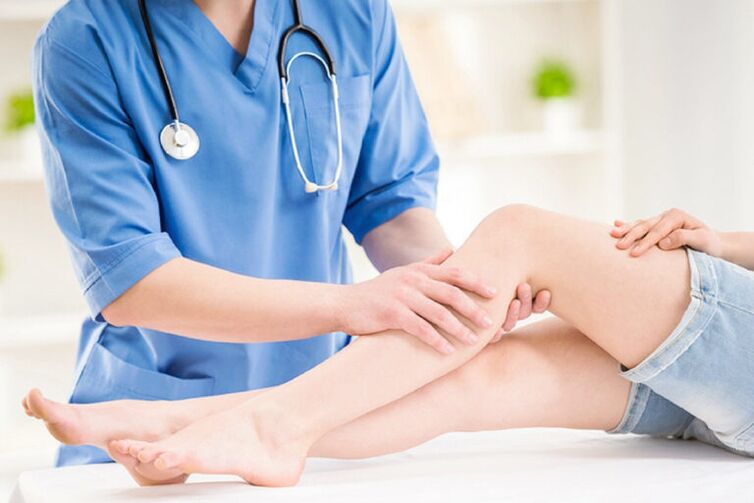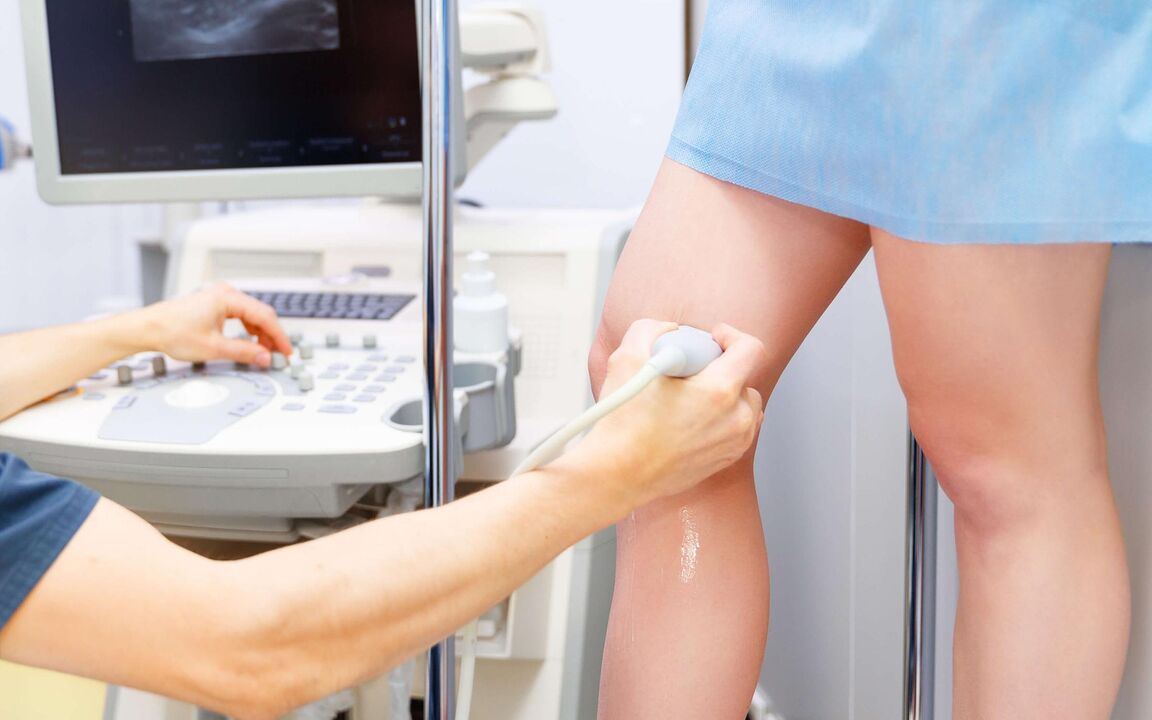
Varicose veins are divided into subspecies, each of which has its own characteristics. Treatment depends on the stage of the disease, its cause, the corresponding pathology and other factors.
Description of the disease
In short, everything about varicose veins is a disease in which the outflow of blood is interrupted, stagnation appears. This leads to bloating of the veins and its serpentine twists. The disease is quite common, occurring in about a quarter of the population.
During adolescence, venous expansion develops with equal frequency in both sexes. In adulthood, women are twice as likely to be at risk. Vein problems are caused by severe hormonal changes that occur during the menstrual cycle or during pregnancy.
As a result, the tone of the vessels is very weak, they begin to expand, and the venous blood supply is disrupted. The diagnosis of vbvnc is made (if not - varicose veins on the lower part of the leg).
Development mechanism
The leg veins form a network with many ramifications, which are connected by a perforator. Through the superficial blood vessels, outflow from the epidermis and its tissues occurs, through the deep - from other tissues. Perforated vessels equalize venous pressure. Under normal circumstances, blood flow only moves in a deep direction. From the edges to the middle - due to the remaining blood pressure and tendon pressure.
When this process is disrupted, the peripheral veins swell, turn blue and twist. At the same time, varicose nodes appear, the valve circuit is destroyed, and vein dilatation appears. Blood outflow should not follow a normal pattern. This is accompanied by venous reflux. Spider veins appear. Closed valves in the veins do not let blood rise. Blood stasis is formed, pressure increases in the arteries.
As soon as it becomes very high, blood begins to be pushed out. The excessive amount stretches the walls of veins and blood vessels, forming intradermal varicose veins. The edges of the capillaries lean heavily on the dermis and shine through it, forming a vascular network. Such spots are very weak, the color becomes more pronounced. Nodules on the legs become clearly visible (like what varicose veins are shown in the photo). High blood pressure contributes to atrophy of muscle fibers, nerves involved in dead venous tone.
Classification of diseases
The disease can manifest in different areas. More common are varicose veins on the hips and legs. The disease has several classifications. This is due to the many variations of course and site of damage.
Varicose vein rating:
- Compensation A. The patient did not complain of anything, but visual examination revealed the presence of swollen veins in the legs. These are the early signs of the disease.
- Subcompensation B. The blood vessels in the legs are very swollen. The patient complains of distension in the limbs, night cramps. In the evening, there is slight swelling of the veins in the legs, feet and ankles. These symptoms disappear in the morning.
- With decompensation, eczema, dermatitis and itching of the epidermis are added to the above symptoms. The skin begins to glow, becoming dry and dense. Minor bleeding is visible below the surface.
This classification reflects the degree of venous insufficiency, the form of venous swelling and some complications.
Classification by form
The disease is divided into several types:
- varicose veins segment;
- primary (with two subspecies - in small or large saphenous veins);
- perforated;
- reticular.
International classification
According to the international classification, varicose veins on the lower part of the legs are divided into six classes, due to certain characteristics:
- zero - no symptoms of other diseases, except heaviness in the legs;
- the first - a network of veins and asterisks visible visually, at night a person is twisted by cramps in the muscles;
- the second - some veins begin to grow;
- the third - there is swelling of the feet, which does not disappear even after a short rest;
- fourth - there is hyperpigmentation of the feet, dermatitis;
- fifth - ulcers are formed;
The sixth class of varicose veins in the legs is diagnosed when the skin lesion has developed into trophic and become persistent.
Cause of incident
The causes of varicose veins are very diverse - from improper lifestyle and diet to congenital pathology. Varicose veins occur due to violations of the circulatory system.
Causes of occurrence:
- Hereditary tendencies. Children whose parents have varicose veins can get the disease in 70 percent of cases. At the same time, signs of varicose veins often appear at an early age.
- Disorders of the endocrine and hormonal systems. The risk group is mainly women, due to the anatomy of the body. Women have insufficient amounts of estrogen, and corpus luteum hormones predominate. They have a relaxing effect on the muscles, reducing the elasticity of the vein walls. The most dangerous varicose veins on the legs in women during childbirth, lactation, menopause. The risk zone for both sexes is the ripening period.
- Stress, depression, nervous disorders reduce the tone of the veins. Their elasticity is controlled by nerve endings.
- Inflammation of the pelvis damages the small blood vessels.
- Why do varicose veins appear with insufficient mobility, office work? When a person is sitting, his veins are pinched strongly. As a result, blood circulation is disrupted and the tone of the duct walls is reduced. Fluid begins to stagnate in it, leading to the expansion of the veins.
- Increased physical activity, including weight lifting, prolonged leg work, obesity, pregnancy. Against the above background, the pressure in the veins increases a lot.
- Various neoplasms, blood clots that block the outflow of blood.
- Flat feet.
- Illness and injury.
- Constipation, in which pressure accumulates in the abdomen.
- The "intersection" of arteries-veins where an overflow of arterial blood cells can occur.
- Too high heels. The risk of varicose veins increases significantly if you move on them for a long time.
- Chronic liver disease - cirrhosis, all types of hepatitis, etc.
- Body structure. People who are above average height are more likely to have varicose veins.
Another cause of varicose veins on the lower part of the legs is upright posture. A huge load falls on one's feet. The blood column extends from the bottom to the heart muscle, so those who spend a lot of time in a standing position are most at risk.
Symptoms of varicose veins
Symptoms of varicose veins begin with a feeling of heaviness in the legs. Many people confuse this feeling with normal fatigue.
The disease begins to develop, and new symptoms appear:
- there is thickening of the veins;
- pain in the legs;
- evening swelling of the feet;
- pulsating veins;
- burning sensation under the skin;
- night muscle cramps;
- redness of the affected area;
- veins begin to expand;
- the skin of the lower legs becomes dark, with seals;
- numb feet.
Sometimes the symptoms of varicose veins appear only in the popliteal area or on the back of the legs. These signs are less noticeable if the limb has excessive hair or thick skin.
Varicose veins in the legs are easily determined by palpation. In this case, the twists of the veins are felt. If the patient's leg is raised, then the venous tissue disappears, in an upright position it thickens.
Dull lobes, burning sensation, and cramps often appear after standing for a long time. The foot swells mainly in the soft tissue area - in the lower part of the lower leg, in the ankle. If varicose veins are not treated, then the deformity affects and affects the skin. It acquires a bluish color, swells rapidly. Additional symptoms appear:
- induration;
- severe muscle pain that becomes more intense when walking
- varicose ulcers;
- pigmentation;
- veins respond with pain when groped;
- inadequate epidermal nutrition.
When the varicose veins on the lower part of the leg enter a complicated stage, additional weakness and fever appear. More rarely, bleeding occurs due to a ruptured vein. This phenomenon most often appears at night.
Diagnostics
Only a vascular surgeon or phlebologist can accurately determine varicose veins. Doctors should consult at the first sign of illness. First, a visual examination of the patient is performed, palpation of the area allegedly damaged. To clarify the diagnosis, additional diagnostics of varicose veins are performed:
- Ultrasound examination, in which not only the pathology is determined, but also the direction of blood flow, the presence of neoplasms and blood clots are seen. This procedure allows you to assess the degree of vascular dilatation.
- Contrast venography is the most informative and accurate method. It allows you to assess the condition of the veins as accurately as possible. To do this, before the procedure, a contrast agent is injected into the patient’s body, which stains the blood.
Methods are interchangeable. However, ultrasound is less invasive, so this method is preferred. Determination of the severity of defects and disorders was performed using X-rays and rheovasography.
Disease treatment
For the treatment of varicose veins, complex treatment is initially prescribed. It includes several directions. The main thing is drug treatment. In the early stages, venotonics are prescribed in the form of ointments and gels. They protect the vascular walls, speed up outflow and improve blood circulation.

Preparations for vascular disease are used in the course, reducing pain and swelling. However, ointments and gels do not have a strong effect, they are used in the early stages of the disease. Venotonics are also available in tablets. They are prescribed to eliminate varicose veins in:
- Saponit.
- based on Diosmin.
- Rutosides eliminate inflammation.
Phlebectomy of the lower leg is performed using an injection or elastic bandage. The puncture method is used before, during and after surgery. Catheter view - only during the surgical period. Isolated sclerotherapy does not provide stable results, and will not stop the progression of the disease. More often it is combined with surgical treatment. Phlebosclerosis therapy has contraindications:
- eliminate endarteritis;
- acute thrombophlebitis of the legs;
- diabetic angiopathy;
- blood clotting disorders;
- pregnancy;
- atherosclerosis with ischemic disease;
- allergic reactions to drug constituents.
In addition, prescribed drugs that improve blood circulation - low molecular weight dextrans. They reduce blood viscosity, increase the elasticity of blood vessels and participate in the breakdown of platelets. This improves microcirculation and tissue oxidation.
Also, for vascular disease, anticoagulant drugs of direct and indirect action are prescribed. They reduce the risk of blood clots.
At the same time, external decongestants are used. They reduce inflammation and prevent blood clotting. Non -steroidal tablets for varicose veins relieve pain and inflammation, preventing its spread.
Physiotherapy
Treatment of varicose veins in the legs is possible by the puncture method. It can be classified as physiotherapy, as it is often done in a surgeon’s office. First, the large veins are blocked, then the smaller ones. Prior to the introduction of the drug, the patient lay on the couch. For long vessels or several located around the circumference of the foot, more than one therapy session is performed.

Physiotherapy for varicose veins includes a new direction of treatment - the destruction of veins with radio frequency radiation. This method does not cause more trauma to the vessel, has less pain and prevents possible complications. The efficiency of the method is high. Radiation destroys the walls of the affected vessels, while the healthy ones remain unaffected. The vein gap is gone.
Pneumatic sequences can be set, which are carried out using small devices. During the session, tissue trophism and blood circulation improved. Some symptoms of varicose veins become significantly weakened.
Surgical operation
The decision to perform surgery on the lower leg vein is made by a vascular surgeon or phlebologist. They also give other recommendations for varicose veins. For example, for pregnant women, if the disease is not dangerous, it is recommended to postpone surgery until the baby is born.
During pregnancy, varicose veins on the legs in women develop and the results achieved by surgery may disappear. Then re -intervention will be required. Surgical treatment can be done in several ways:
- Combined phlebectomy is the most common method. It is used for severe varicose veins. The operation was performed under general anesthesia. A minimum cut is made through which a special probe with a phleboextractor is inserted. Then it is removed and the vein is cut from the groin to the middle of the lower leg. Small veins and blood vessels are removed through puncture. This operation is called a miniflebectomy.
- Endovasal electrocoagulation is accompanied by vein removal using current. This method is more dangerous than conventional surgery or destruction.
- Cryotherapy is used to remove blood vessels using low temperatures. This method is safe, but it is difficult to determine the required depth of clotting so as not to damage nearby tissues, therefore, treatment of varicose veins in this way is very rarely used.
- Venous sclerobliteration is performed by inserting a catheter under the skin. Previously, the veins and required parts were marked. Then the anastomosis is exposed to a large blood vessel, and a tributary is tied. Perforated veins are pinched from the incision. A catheter is inserted into the cut vein. Then the vein is sutured and the wound is bandaged. Gauze rollers are placed along the entire vein and pressed on the foot. When the catheter is removed, venosclerosant is injected.
- Perforated vein endoscopic surgery allows the affected veins to be ligated, thus excluding them from general circulation. For this, a special probe is used. Another similar method is transilumination phlebectomy.
Laser freezing is performed using special equipment. The affected blood veins are closed from the inside with a laser beam. As a result, the veins are excluded from general circulation.
Treatment at home
Before treating varicose veins on the legs, you should consult a doctor. He can prescribe systemic medication, leech therapy. Latent internal varicose veins can be diagnosed. It is impossible to cure it at home. For mild illnesses, apple cider vinegar and cabbage leaves are commonly used.

To cure varicose veins, you need to wear compression underwear, do an elastic bandage. However, any treatment at home will be ineffective in the advanced stages of the disease. Leeches are an unconventional method of therapy. Home treatment with hirudotherapy can only be used under expert supervision. You cannot perform the procedure yourself.
Complications of varicose veins
If varicose veins are not treated in a timely manner, the disease can lead to serious complications. This includes:
- dermatitis;
- eczema;
- acute thrombophlebitis of the superficial veins;
- phlebothrombosis;
- hypoxia;
- bleeding in varicose veins;
- trophic ulcers.
With the development of varicose veins in the legs, varicothrombophlebitis appears, and then lebothrombosis. It catches the deep veins, pulmonary embolism begins. If the varicose veins are not stopped at this stage, vascular occlusion develops, and after stopping the outflow of blood, gangrene. This is fraught with at least limb amputation.
Prophylaxis
Before treating varicose veins, you should consult a doctor. Probably, there will be enough mild venotonics and adherence to preventive measures so that the disease does not develop. It is necessary to reduce excessive physical activity, you can not stand for a long time - it is better to move, the sitting position is periodically replaced by a lying position. If this is not possible, at least make a circular motion with your feet.
After a hard day, your tired legs need to be held in an elevated position. Try to avoid placing one foot on top of the other foot for long periods of time. It is necessary to maintain optimal weight, with obesity - go on a diet. Avoid wearing items that crush your groin, legs and waist.
It is advisable to take daily walks in the fresh air, actively engaging in swimming or cycling. It is recommended to do exercise every morning and evening. It is important to abandon bad habits - smoking, alcohol consumption. It is useful for contrast baths.
It is possible to treat varicose veins in the early stages with ointments and gels, mild medications. However, for progressive disease, cardinal surgical methods are required, which are combined with compression and sclerotherapy.

















